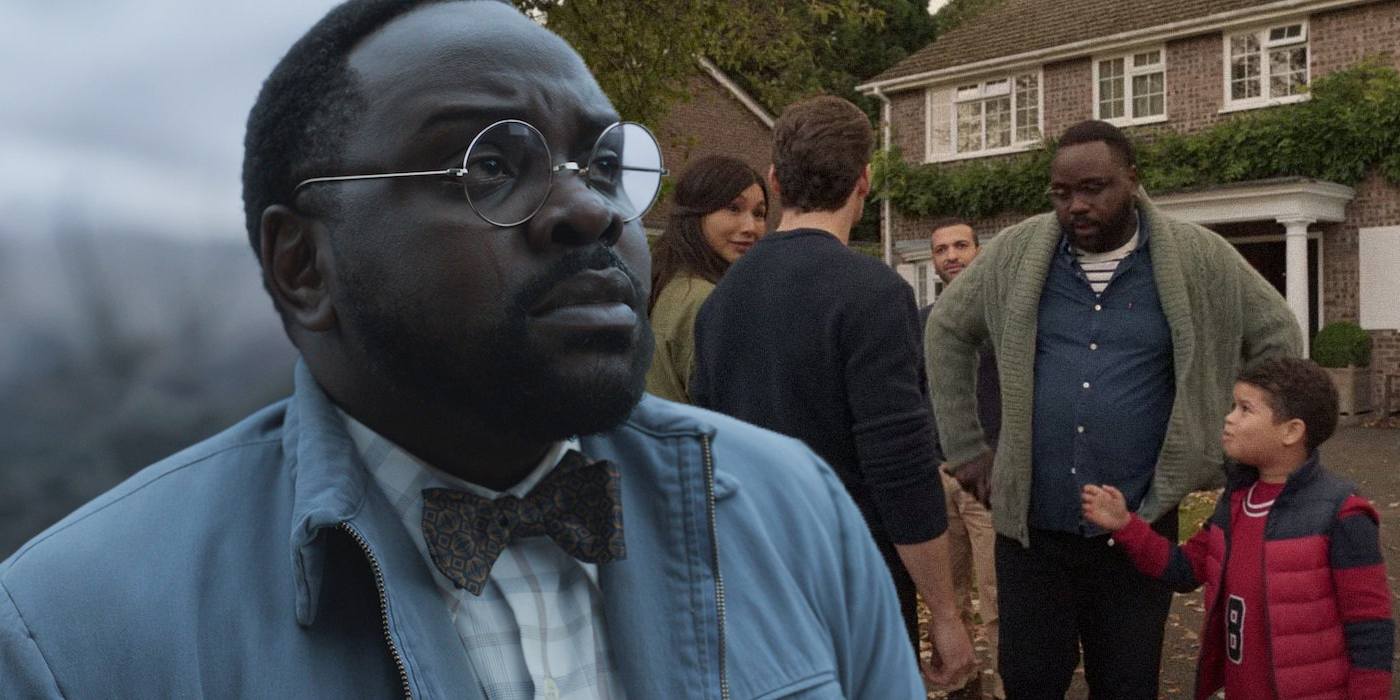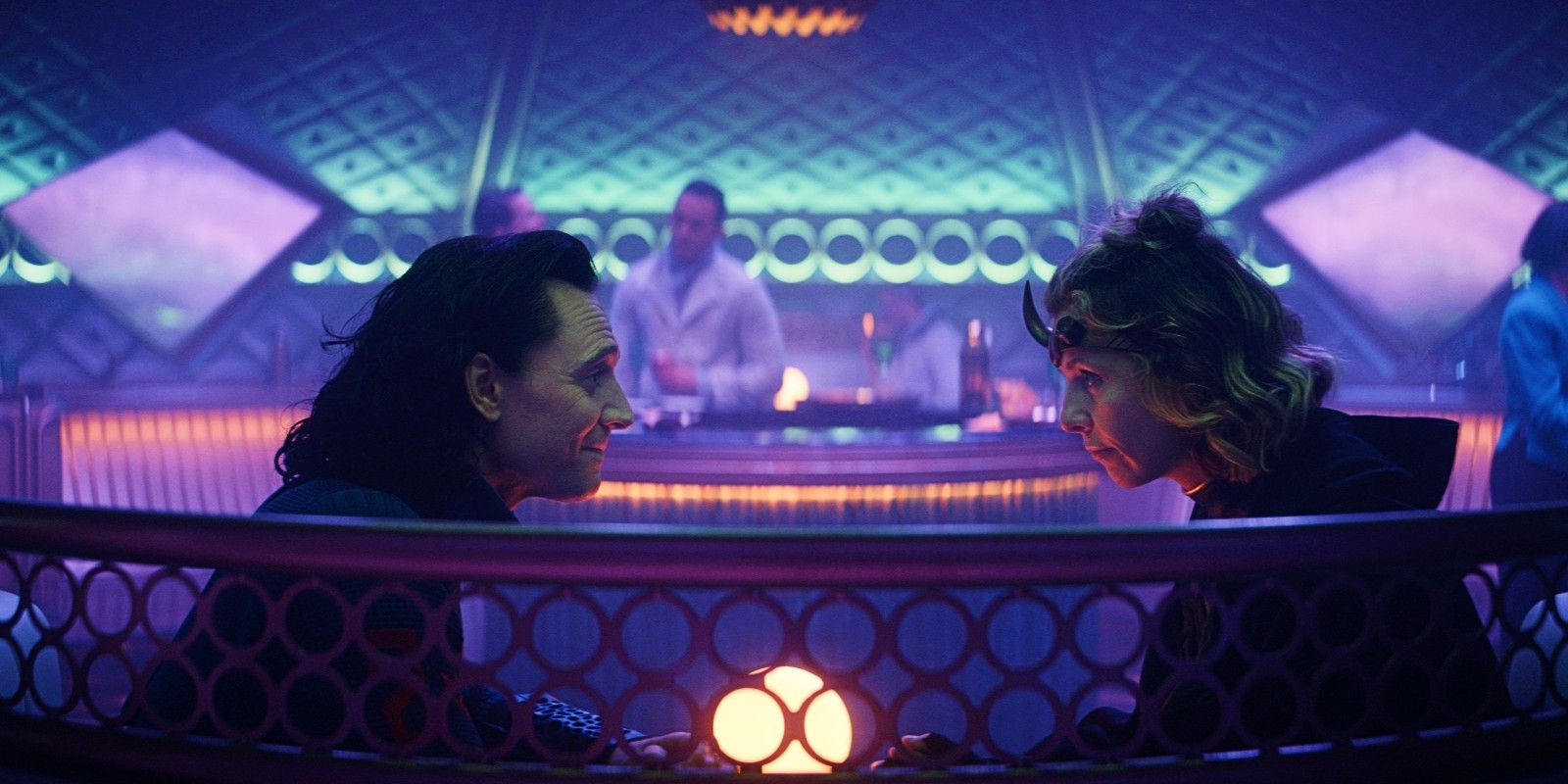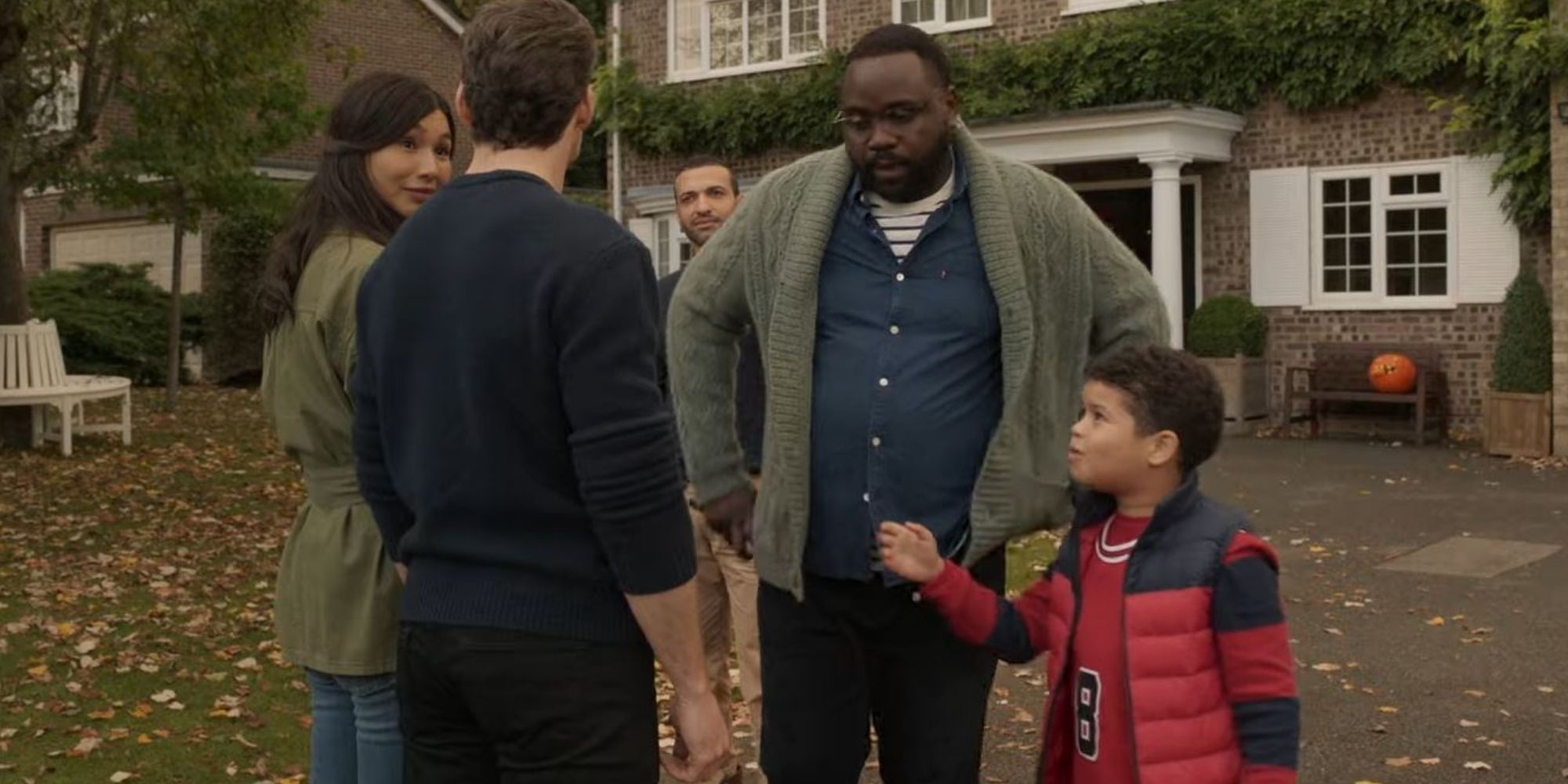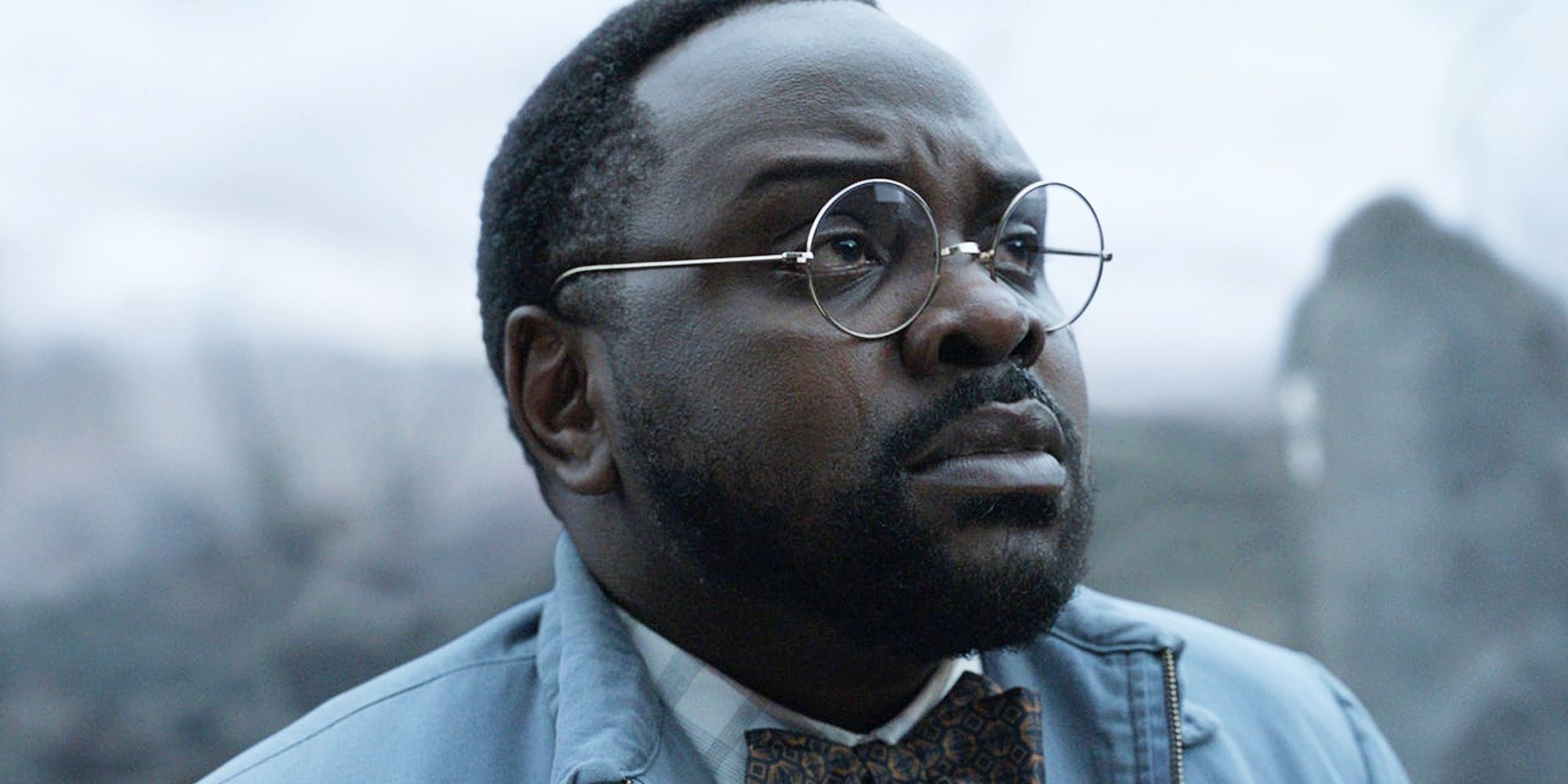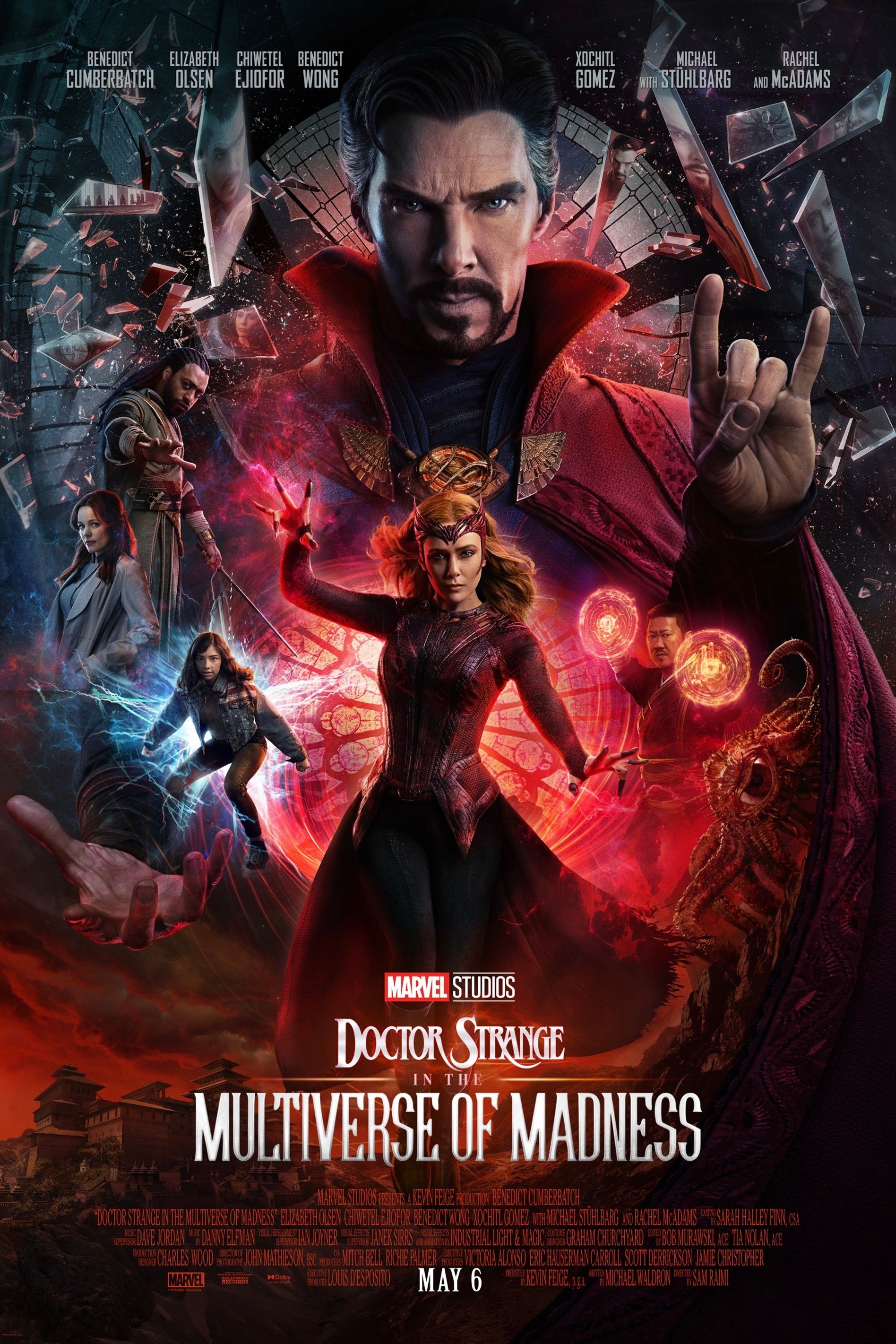Warning: Contains spoilers for Eternals.
The MCU’s Eternals goes a long way to fixing Disney and Marvel’s long-standing problems when it comes to LGBTQ+ representation in their movies. The initial conversations around it seemed promising; production members often talked about the inclusion of Phastos (Brian Tyree Henry) as the MCU’s first openly gay superhero well before the release. However, Disney’s history with promising true LGBTQ+ representation but offering only queerbaiting or hints kept many from being too optimistic about the portrayal.
In the run-up to its release, Marvel’s Eternals was the target of a review bomb on IMDb well before its release. Hundreds of 1-star reviews tanked the movie’s ratings before more than a few critics and early screeners were able to see Eternals. The vast majority of these reviews targeted the fact that Eternals features a same-sex kiss between Phastos and his husband, Ben (Haaz Sleiman).
Disney and the MCU’s history of LGBTQ+ representation have been getting steadily more attention over the last couple of decades. Here is exactly what that problem looks like and how Eternals goes a long way toward suggesting that they might finally be serious about addressing it. Even more importantly, here is what Disney and Marvel need to do going forward to keep improving their LGBTQ+ representation on screen and why.
Disney & Marvel's Problem With LGBTQ+ Representation
Disney has long been criticized for not including LGBTQ+ characters in their movies and the content produced by their subsidiaries like Pixar (purchased in 2006) and Marvel (purchased in 2009). Despite the huge amount of material that Disney has created, the amount of LGBTQ+ representation in it is vanishingly small and largely contained to television. That has slowly started to change in more recent years as they have been put under greater pressure to provide better representation. However, when queer characters have been included in their content it is often in blink-and-you’ll-miss-it moments, which has led to extensive accusations of Disney queerbaiting its audiences. Notable occurrences are the brief mention that a female character is married to a woman in Onward, a cameo appearance from Joe Russo in Avengers: Endgame as a gay man at a support group, and an acknowledgment of Loki’s non-cishet gender and sexuality in brief moments of Loki.
The lack of LGBTQ+ representation in Disney and Marvel is a real problem as it is extremely important for these marginalized communities to see themselves represented on screen. The representation helps them to feel more accepted by a society that can too often platform anti-LGBTQ+ voices and also helps others to understand that these identities are entirely normal and should be embraced, not shunned. Disney has previously gone a step beyond not including openly LGBTQ+ characters and relationships by pushing back against fans’ queer reads of stories (when a story is not explicitly LGBTQ+ but queer viewers are able to see an analogous version of their own narratives or an implied LGBTQ+ sentiment expressed). The most recent occurrences of this have been with Disney Pixar’s Luca, where director Enrico Casarosa initially pushed back against those who felt that Luca served as a gay or trans allegory, and with Marvel’s The Falcon and the Winter Soldier, when Anthony Mackie complained about fans being excited by the idea that Sam Wilson and Bucky Barnes gave off queer vibes.
A common explanation for Disney eschewing the portrayal of LGBTQ+ representation in its movies comes from the fact that the studio receives a large quantity of its revenue from Chinese markets. China regularly censors any LGBTQ+ depictions from movies and has previously entirely banned movies from being shown in the country because of LGBTQ+ content. However, calls have grown louder for Disney to stand up for values rather than money, especially as their monopoly in the market has continued to grow. Their choices in Eternals around LGBTQ+ representation suggest that they might finally be moving in that direction. Several countries in the Middle East have now banned Eternals after they requested edits be made to their theatrical cuts to erase the LGBTQ+ representation and gay kiss, but Disney stood by it and declined to make the edits.
How Eternals Gets Its LGBTQ Story Right
There are a lot of ways that an LGBTQ+ story can fail its audience. Two of the most common issues are that the characters can be unimportant background figures, suggesting that the stories of the cishet characters are more important, or queer characters are defined by their sexuality, shown as stereotypes rather than as fully rounded characters. Eternals truly gets its LGBTQ+ representation right with Phastos. The portrayal of the gay relationship between Phastos and his husband Ben is unabashed and wholesome, as the two are shown to love each other and to care dearly for their son Jack (Esai Daniel Cross). The scenes with the two are given as much, if not more, weighting than any of the other relationships in Eternals and the movie was able to make good on early promises from the studio that Phastos’ sexuality would simply be a part of his character and not a defining feature.
The fact that Phastos is in a relationship with another man is less important to the plot of Eternals than the fact that he is in love with a human. Both he and Sersi are in romantic relationships with humans during the movie and the biggest concern any of the Eternals express about these relationships is that the humans will die one day while the Eternals go on living forever. The only questions that are raised by the Eternals about Phastos’ relationship are not in regard to his sexuality, but instead related to the fact that he had previously given up on humanity entirely.
Eternals is the perfect movie to have included this first openly gay superhero (aside from the fact that it took 13 years and over 20 movies in the MCU for it to arrive). The whole movie is structured around the ideas of different types of love. This opened the door for another piece of LGBTQ+ representation that is quietly included in the movie but has not been talked about nearly as much. Thena (Angelina Jolie) and Gilgamesh (Ma Dong-seok, credited as Don Lee) appear to be in an aromantic and/or asexual relationship, as the two express a deep and abiding love and care for each other but are not shown to have any physical or explicitly romantic expressions of that love. This is particularly appropriate for Thena as the character draws on the Greek goddess Athena, who was famously a virgin goddess and eschewed sexual advances.
Eternals goes all-in on its LGBTQ+ representation by also including a character that is not explicitly LGBTQ+ but is easily left open for a queer read. The Eternals' Sprite, who dislikes and resents humans for what they have, dresses androgynously and is distressed by the fact that she is stuck in the body of a child. Throughout the movie, she expresses the feeling that her body is not right for her identity and experience a form of dysphoria over it. Her narrative speaks to the trans experience in a way that Marvel has not done before, whether intentionally or not. However, Kieron Gillen’s recent Eternals comics run indicates that Sprite may be trans or genderfluid, lending credence to the idea that the trans experience parallels in the movie are intentional.
Future Disney & Marvel Movies Can Still Improve Representation
Eternals’ LGBTQ+ representation, from Phastos and Ben, Thena and Gilgamesh, and Sprite’s narrative, marks a huge step forward for Disney and Marvel. However, Eternals currently stands out as being against the norm for the studios and they still have a long way to go. This sort of representation needs to become more common and more expressive of the range of experiences in the LGBTQ+ community. Gay and lesbian relationships between cis people are the most commonly represented part of the community, so it is no surprise that Phastos’ relationship was the first major win for the MCU. Going forward Disney and Marvel need to show a broader range of identities, especially as recent studies have shown more and more of Gen Z identifies as nonbinary or queer in some way.
While Eternals’ portrayal of these characters as having LGBTQ+ identities that are fully embraced by everyone else in the movie is important, it is only one facet of the representation that Disney and Marvel need to strive for. To avoid portraying LGBTQ+ experiences disingenuously going forward, they need to acknowledge the struggles that are faced by the community in wider society. Those stories must be told delicately and avoid having characters entirely defined by the trauma that the world inflicts on them. To do this effectively in the MCU beyond Eternals, Marvel needs to ensure that they focus on having those stories told by those who have experienced them and work to hire more LGBTQ+ actors, writers, and directors.

